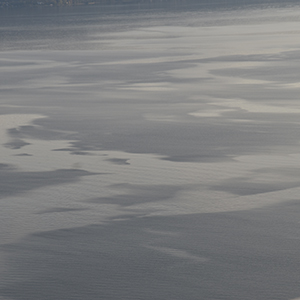Effects of natural surfactants on the spatial variability of surface water temperature under intermittent light winds on Lake Geneva

Submitted: 12 July 2021
Accepted: 31 May 2022
Published: 18 July 2022
Accepted: 31 May 2022
Abstract Views: 2750
PDF: 527
HTML: 125
HTML: 125
Publisher's note
All claims expressed in this article are solely those of the authors and do not necessarily represent those of their affiliated organizations, or those of the publisher, the editors and the reviewers. Any product that may be evaluated in this article or claim that may be made by its manufacturer is not guaranteed or endorsed by the publisher.
All claims expressed in this article are solely those of the authors and do not necessarily represent those of their affiliated organizations, or those of the publisher, the editors and the reviewers. Any product that may be evaluated in this article or claim that may be made by its manufacturer is not guaranteed or endorsed by the publisher.
Similar Articles
- Marco Pilotti, Giulia Valerio, Luca Gregorini, Luca Milanesi, Charlie A.R. Hogg, Study of tributary inflows in Lake Iseo with a rotating physical model , Journal of Limnology: Vol. 73 No. 1 (2014)
- Behnam Zamani, Manfred Koch, Ben R. Hodges, Effects of morphology in controlling propagation of density currents in a reservoir using uncalibrated three-dimensional hydrodynamic modeling , Journal of Limnology: Vol. 79 No. 3 (2020)
- Xiaodong Wu, Daming He, Guijun Yang, Linlin Ye, Chunling Zhu, Haifeng Jia, Jinming Hu, Seasonal variability of water quality and metazooplankton community structure in Xiaowan Reservoir of the upper Mekong River , Journal of Limnology: Vol. 73 No. 1 (2014)
- Chang-Chun Huang, Yun-Mei Li, Hao Yang, Qiao Wang, Jun-Sheng Li, Xia Chen, Underwater light field determined by water constituents in highly turbid water: the case of Taihu lake , Journal of Limnology: Vol. 72 No. 1 (2013)
- Külli Kangur, Peeter Kangur, Kai Ginter, Kati Orru, Marina Haldna, Tõnu Möls, Andu Kangur, Long-term effects of extreme weather events and eutrophication on the fish community of shallow Lake Peipsi (Estonia/Russia) , Journal of Limnology: Vol. 72 No. 2 (2013)
- Renata Trevisan, Marco Picarella, Frank B. Dazzo, Stefano Bona, Giuseppe Morabito, Andrea Squartini, Using a morpho-functional approach to assess phytoplankton dynamics in two adjacent high-mountain lakes: a 10-year survey , Journal of Limnology: Vol. 73 No. 3 (2014)
- Kurt A. Haberyan, Mozingo Studies I. Ice phenology and limnological legacies in a mid-continental reservoir , Journal of Limnology: Vol. 75 No. 2 (2016)
- Iván A. Meza-Matty, Gorgonio Ruiz-Campos, Luis Walter Daesslé, Arturo Ruiz-Luna, Álvaro Alberto López-Lambraño, Faustino Camarena-Rosales, Kathleen R. Matthews, Daily, seasonal, and annual variability of temperature in streams inhabited by the endemic San Pedro Martir trout (Oncorhynchus mykiss nelsoni), in Baja California, Mexico, and the predicted temperature for the years 2025 and 2050 , Journal of Limnology: Vol. 80 No. 2 (2021)
- Anna B. Sikora, Piotr Dawidowicz, Eric von Elert, Daphnia fed algal food grown at elevated temperature have reduced fitness , Journal of Limnology: Vol. 73 No. 3 (2014)
- Franco Tassi, Jacopo Cabassi, Dmitri Rouwet, Roberto Palozzi, Massimiliano Marcelli, Marco Quartararo, Francesco Capecchiacci, Matteo Nocentini, Orlando Vaselli, Water and dissolved gas geochemistry of the monomictic Paterno sinkhole (central Italy) , Journal of Limnology: Vol. 71 No. 2 (2012)
<< < 1 2 3 4 5 6 7 8 9 10 > >>
You may also start an advanced similarity search for this article.

 https://doi.org/10.4081/jlimnol.2022.2048
https://doi.org/10.4081/jlimnol.2022.2048






